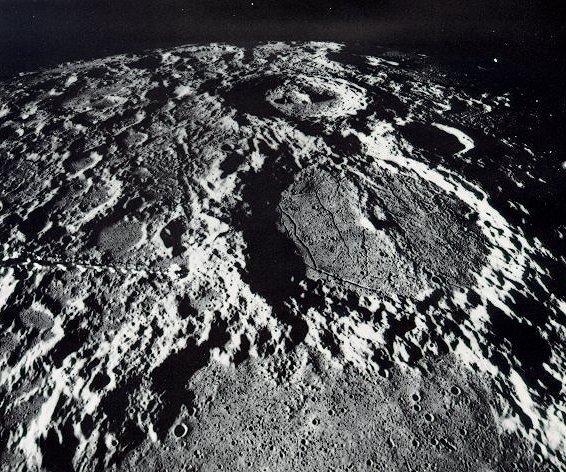
Some scientific progress is made by developing new concepts, and some is made by throwing monkey wrenches into existing ideas. A letter published today in Nature looks like an instance of the latter.
It's pretty well accepted that the Moon formed from material ejected after a Mars-sized body collided with the Earth, but the timeline of how the Moon came together after that impact is an area of active research. Our general understanding of the formation of planetary bodies involves chemical differentiation during the solidification of molten material. As vast "oceans" of magma slowly cool, certain minerals crystallize earlier than others, removing their constituents from the mix.
On the Moon, a group of rocks called ferroan anorthosites (or FANs) are thought to have accumulated atop the magma ocean as they crystallized, forming the first lunar crust. FANs have proven very difficult to date because of the poorly constrained isotopic geochemistry of the oldest Moon rocks. As a result, their calculated ages have had rather large error bars attached to them. The ages that have emerged so far indicate that the FANs formed soon after the lunar material was ejected from Earth. In other words, the magma oceans cooled fairly quickly.
The authors of this letter developed improved methods for dating FANs that allowed them to calculate ages with unprecedented precision. They used three isotopic systems commonly applied to these rocks—207Pb-206Pb, 147Sm-143Nd, and 146Sm-142Nd. For the first time, the researchers were able to calculate a concordant age—that is, an age on which these different series agree exactly. Previous attempts to date FANs had encountered too much error for the series to agree so precisely.
The work resulted in an age of 4.36 billion years (give or take 3 million). That’s several tens of millions of years more recent than we had thought the Moon's crust formed. This leads to one of two possibilities: either the Moon took much longer to accrete and solidify than we thought, or the assumptions about FANs forming in the last stages of magma oceans are incorrect.
A different process (known as serial magmatism) could explain the measured FAN ages, but the magma ocean theory was partly based on the characteristics of FANs. If FANs are in fact a product of a different process, our understanding of how planetary bodies solidify and differentiate could take a step backward.
Nature, 2011. DOI: 10.1038/nature10328 (About DOIs).
Listing image by Photograph by NASA
reader comments
101